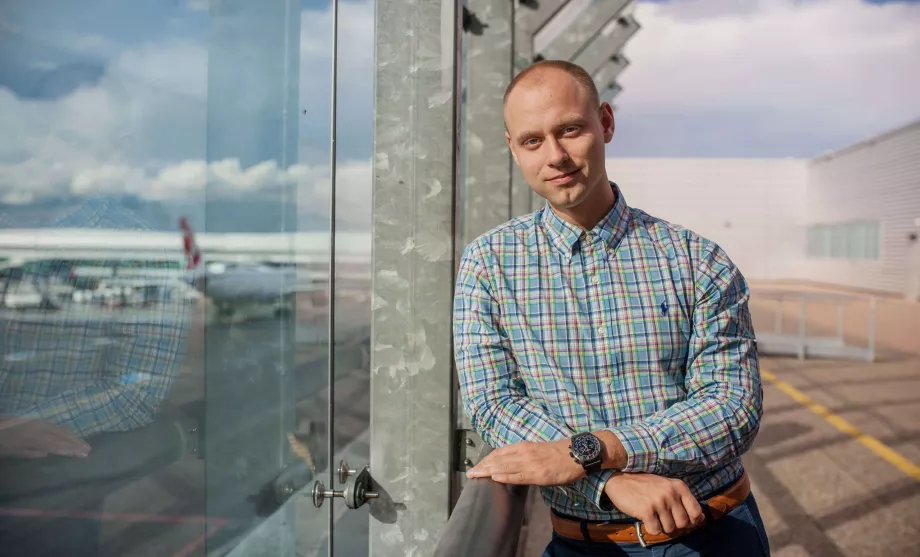Car rental in South Korea

Discover the Korean countryside and rugged coastline full of scenic views. While you can get to small villages by bus, rural services often run only a few times a day.
If you're travelling with more than one person, renting a car can also pay off financially as public transport is relatively expensive.
Driving in South Korea does have its specifics, but the road network is very good and well laid out. You can read about the tricky things on South Korean roads in this article.
Booking a car in South Korea
How far in advance to book a car in South Korea? And what car rental companies operate here?
South Korea is a bit of a peculiar country, with relatively few car rental companies. Of the foreign companies, you'll come across Avis or Hertz, which operates here through Korea's largest car rental company, Lotte Rent a Car. The second largest local rental company is SK Rent a Car. All the companies mentioned are reputable and there is no need to worry about unfair dealing.
To make a reservation, we recommend using a comparison engine that compares the prices of all car rental companies according to the criteria you specify.
Car rental prices in South Korea are not as susceptible to the seasons as in other countries, and usually for the lowest price you just need to book at least 2-3 weeks before your trip.
Car rental prices in Korea
Even with little competition, car rental prices in South Korea are quite high. On average, you'll pay around the same price for a week's rental 715 000 krw regardless of the season. Prices are very high for renting larger SUVs or more luxurious limousines.
However, you won't usually need these when travelling in Korea. You won't encounter bad broken roads or extremely long hills that conventional cars can't handle.
Prices are lower on Jeju Island, where you can rent a car from 515 000 krw for a week in the off-peak season. Travelers usually rent cars at international airports, where highways are always the easiest transportation.
- Car rental at Seoul - Incheon Airport (ICN)
- Car rental at Jeju Airport (CJU)
- Car rental at Seoul - Gimpo Airport (GMP)
- Car rental in Busan airport (PUS)
International driving license and other documents
To rent a car in South Korea, all you need is an International Driving Permit (abbreviated "IDP"), which is only valid in combination with a national driving licence. So make sure you pack both licences when you travel.
Korean car rental companies usually still strictly require a credit card for booking, and you can't get by with a regular debit card.
You can choose your insurance according to your own preferences when you book your car. Detailed general information not only about insurance is provided in the article How to rent a car abroad.
Korean car rental companies require a minimum age of 21 years and a driving licence that is at least 12 months old.
Traffic regulations in South Korea
Traffic rules in Korea are similar to those in other civilized countries. Local drivers are not among the most considerate and often break the rules, especially when it comes to speeding and often running red lights.
Basic traffic rules and principles:
- Driving on the right (as in the USA or continental Europe)
- Maximum speed in the village - 60 km/h
- Maximum speed outside the village - 80 km/h
- Maximum speed on motorways - always determined by signs, between 80 and 120 km/h
It doesn't pay to speed because there are traffic cameras literally on every corner in Korea. In the event of a fine, the rental company will automatically charge the amount to the credit card you entered.
Other rules:
- Allowed blood alcohol content - 0.05%
- Vehicles driving on roundabouts have the right of way.
- Seat belts must be worn
- No mobile phone use while driving except hands-free
- Left turns at junctions with traffic lights are only possible if there is a separate traffic light with a left arrow
- It is legal to turn right on a red light, but you must bring the vehicle to a complete stop before you can enter the intersection
The highest penalties are for drink-driving, speeding, running red lights, using a mobile phone while driving or driving in a bus lane.
Pedestrians officially have the right of way at crosswalks, but only the bare minimum of drivers follow this rule. But the fact is that most crossings are covered by traffic lights.
Traffic signs
Korean traffic signs are virtually identical to European ones. Directional signs are always accompanied by signs in English, while the additional text on other signs is entirely in Korean.
Traffic lights are usually located after the intersection and not in front of it.
What to look out for?
In South Korea, you will encounter a lot of naughty things on the roads that can be a nuisance.
Motorbikes. They're ubiquitous in the big cities and villages, and fundamentally disregard any regulations. Especially in traffic jams, keep your eyes open: a motorbike can appear from the left, from the right, in short, anywhere.
Changing lanes. Although it is compulsory to use your turn signal when changing from lane to lane, not everyone follows this rule. Moreover, drivers often change lanes literally at the last minute.
Toll
All motorways and multi-lane expressways are toll roads. In Korea, there are no motorway vignettes, but tolls are paid at toll gates, which are located at regular intervals either directly on the motorways or at exits or on-ramps.
Toll prices vary. Some toll gates charge per distance travelled, others have a fixed price per pass. If you pay by distance, you pick up a ticket from the machine when you enter the motorway, which you insert back into the machine when you exit and pay the amount.
All toll gates have special fast blue lanes for Hi-Pass payment without stopping. Rental cars, however, do not usually have this system, so you have to get into a lane with physical toll collection. Slow down before approaching the toll gate and avoid the blue-painted lane marked "Hi-Pass".
The cash or card payment lanes are marked with"현금 ".
Payment can always be made with cash and foreign credit cards. Payment by card is possible automatically without having to communicate with the attendant, while cash is usually given directly to the live attendant. In addition to regular credit cards, you can also pay with the T-Money transport card, which you must have purchased at the airport for public transport travel.
The usual fare is between 1 800 krw and 5 000 krw.
Petrol prices and petrol stations
Gasoline and diesel are generally cheaper in South Korea than in Europe, but more expensive than in the US. The price per litre varies 1 600 krw.
Gas stations are ubiquitous, both in cities and rural areas. The vast majority of pumps are self-service and the system works similarly to the US. We will describe step by step how to fill up with petrol without help. Unfortunately, the vast majority of the payment machines are only in Korean, but even so, it's not that hard to fill up.
- Pull up to the pump as you would anywhere in the world.
- Get out of the car, walk over to the stand and on the touch screen click on start = the box marked 시작하기
- A request to use an anti-static pad on the stand to reduce the risk of static electricity build-up will appear. Usually there is a green area somewhere near the screen with a picture of a palm that you touch and then click continue = box marked 계속하기 on the screen. If you follow other drivers, 99% of them will click the button without touching the anti-static surface.
- Select the type of fuel you want to retrieve and:
- GREEN = DIESEL (경유) (also marked in blue on price signs).
- YELLOW (ORANGE) = BENZIN (휘발유) (also marked in red on price tables)
- Select payment type. Different pumps will have a different order of fields, but the text is always the same:
- 현금 = cash
- 신용카드 = credit card
- other variations refer to loyalty cards or mobile coupons and do not need to be discussed for foreign visitors
- Select the amount of petrol:
- you will see several numbers in the rows, which always means the amount in tens of thousands of won (1 = 10 000 krw, 2 = 20 000 krw and so on), if you choose this option, the pump will stop itself after the selected amount is used up
- the other fields are for entering a specific amount other than multiples of ten thousand
- if you select a higher amount than you can actually fit in your tank, the difference will be immediately refunded or not counted (if you pay by credit card)
- Insert your card into the reader.
- Now you can put the gun in the tank and start filling up. Once again, we remind you that:
- GREEN = DIESEL (경유)
- YELLOW (ORANGE) = PETROL (휘발유)
- After refueling, just put the gun back in the rack and don't forget the card in the reader.
Road quality and traffic
Korean roads are extremely well maintained, even in remote rural areas. We would even say that the quality of roads in South Korea is among the highest in the world.
Traffic in the big cities is very heavy, but the roads are often multi-lane and even if you get stuck in a traffic jam, it's rare to be stuck in one place for long minutes. You may be going slowly, but you will be going.
Any questions left?
If you have any questions or comments about the article...

